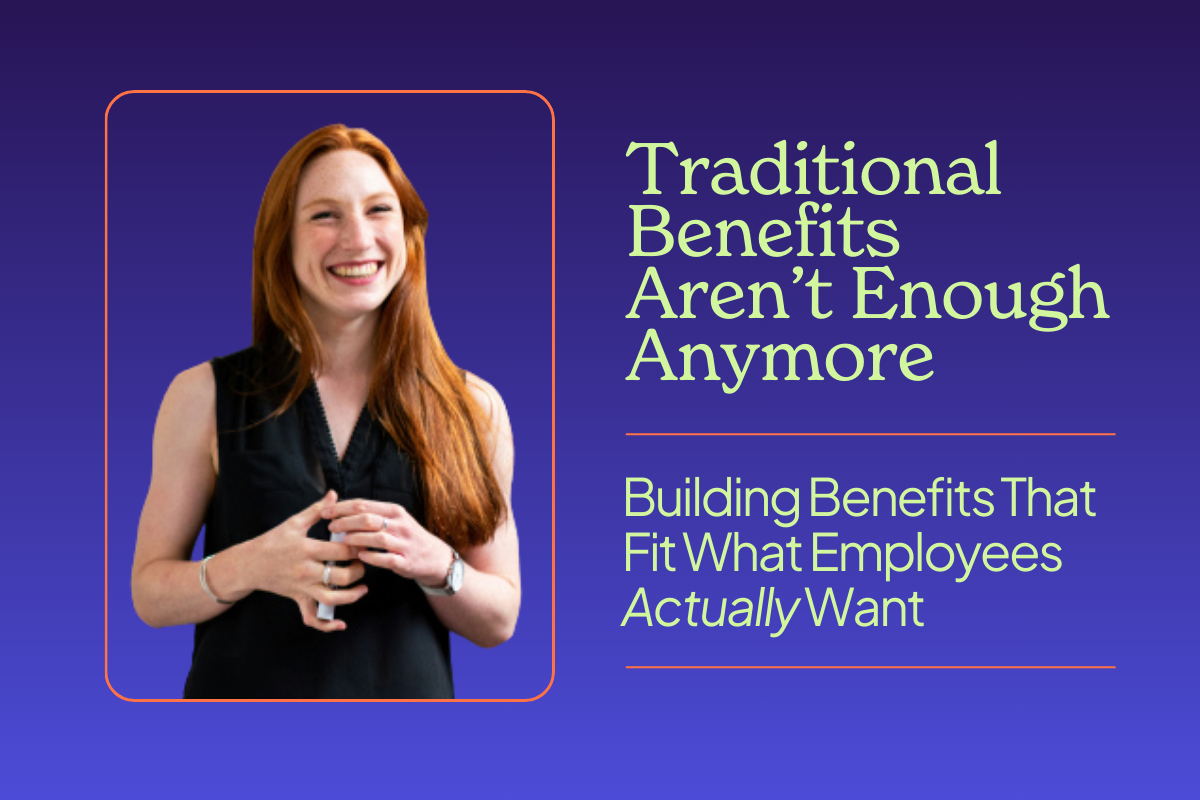Why Traditional Benefits Aren’t Enough Anymore

Beyond the Basics: Why Traditional Benefits Aren’t Enough Anymore
Offering health insurance and a 401(k) used to be enough.
But today’s workforce is navigating a very different world — one filled with rising mental health challenges, student debt, caregiving responsibilities, and evolving expectations about what it means to be supported by an employer.
Traditional benefits still matter, but they’re no longer the whole story.
If your clients want to compete for top talent, they need a more holistic, personalized approach — and brokers are perfectly positioned to lead the way.
Why Traditional Benefits Are Falling Short
A good health plan and retirement account are table stakes. But employees today want benefits that reflect their real lives — not just coverage for what might go wrong.
Think about it:
- A new graduate drowning in student loans isn’t focused on retirement savings.
- A mid-career employee juggling kids and aging parents needs flexible caregiving options.
- A Gen Z professional wants mental health support baked into their wellness plan.
When employers offer the same basic benefits to everyone, they miss the mark for almost everyone.
What Employees Actually Want
We’re seeing a rise in demand for benefits that go beyond the basics and meet employees where they are. This includes:
Mental health and well-being support
Student loan repayment and tuition assistance
Caregiver benefits for children and aging parents
Pet insurance or pet care stipends
Financial wellness tools and coaching
These aren’t “nice-to-haves” anymore — they’re expectations, especially among Millennial and Gen Z employees.
And when employees feel their employer understands their challenges, the payoff is real:
✔️ Increased retention
✔️ Better engagement
✔️ Higher perceived value of the total rewards package
The Generational Factor
One of the biggest challenges your clients face is diversity of need.
Each generation in the workforce brings a different set of priorities:
- Gen Z wants mental health support, financial education, and flexible work.
- Millennials are looking for student debt relief, fertility benefits, and career development.
- Gen X values retirement readiness, caregiver support, and stability.
- Boomers may prioritize health coverage and long-term care options.
A single benefits package can’t serve everyone equally. That’s where personalization — and broker strategy — comes in.
What the Best Employers Are Doing
The top employers aren’t offering more benefits — they’re offering better-aligned ones.
They use data to benchmark their offerings, tailor their packages, and evolve them over time. They’re asking questions like:
- What are competitors in our industry providing?
- Which benefits are employees actually using?
- Where are there gaps in our current strategy?
As a broker, this is your opportunity to bring insights and innovation to the table.
Broker Opportunity: Bring the Data, Deliver the Strategy
Your clients don’t just need a provider — they need a partner who can:
- Analyze employee demographics and preferences
- Benchmark against industry and regional trends
- Recommend benefits that provide the greatest impact per dollar spent
That might mean helping a tech company implement fertility support and on-demand pay. Or guiding a healthcare organization toward financial wellness subscriptions and caregiver concierge services.
Whatever the need, your ability to translate workforce data into benefits strategy will set you apart.
Ready to Help Your Clients Build a Better Benefits Package?
You don’t need to overhaul everything to make a difference. Just start with what matters most.
Our eBook, The Broker’s Guide to Hyper-Personalized Benefits, breaks down 10 ways to help your clients move beyond the basics — and start delivering the benefits today’s employees actually want.
Let’s help employers create benefits experiences that aren’t just expected — they’re unforgettable.
